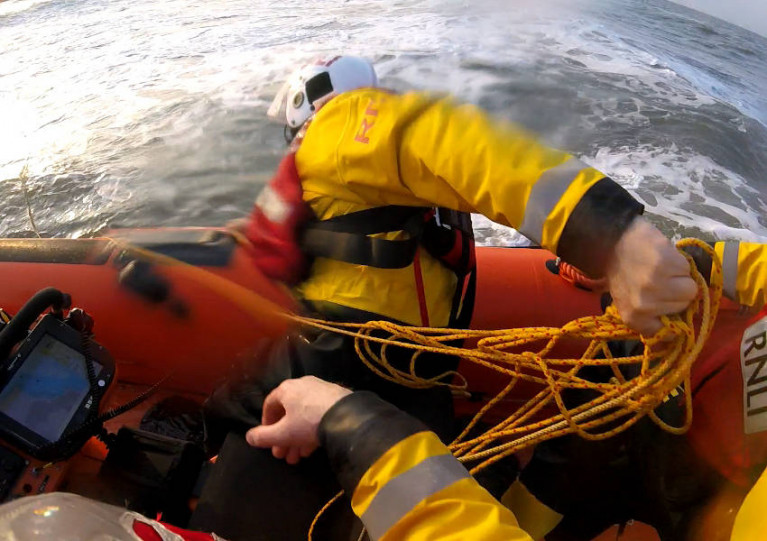Skerries RNLI’s volunteers launched their inshore lifeboat on Wednesday evening (21 April) as part of a multi-agency response to reports of a swimmer in difficulty near the Martello tower in Balbriggan.
The Atlantic 85 lifeboat Louis Simson was launched within minutes of the crew being paged just before 7pm and proceeded directly to the area indicated.
On arrival the crew found the Dublin-based Irish Coast Guard helicopter Rescue 116 already on scene and winching a man from the water.
The casualty was the lowered onto the beach and into the care of an ambulance crew and members of Dublin Fire Brigade who administered first aid before he was transferred to hospital.
Meanwhile, further reports came in that other swimmers had entered the water to assist the casualty and a subsequent emergency call raised concerns that there may still be someone in the water.
Rescue 116, Skerries RNLI and the Skerries Coast Guard unit coordinated to carry out a search of the immediate area covering the water and the shoreline.
The lifeboat investigated a number of objects at the request of Rescue 116, including a lifebuoy which they recovered into the lifeboat.
When Dublin Coast Guard was satisfied that the area had been thoroughly searched and there were no further swimmers in danger, the lifeboat was stood down and returned to station.
Speaking about the callout, press officer Gerry Canning said: “When a person is in trouble in the water, every second counts. Rescue 116 were on scene very quickly and it was an excellent response from all of the emergency services who worked brilliantly together.
“Our thoughts are with the friends and family of the man taken from the water and we hope he makes a full recovery.”































































